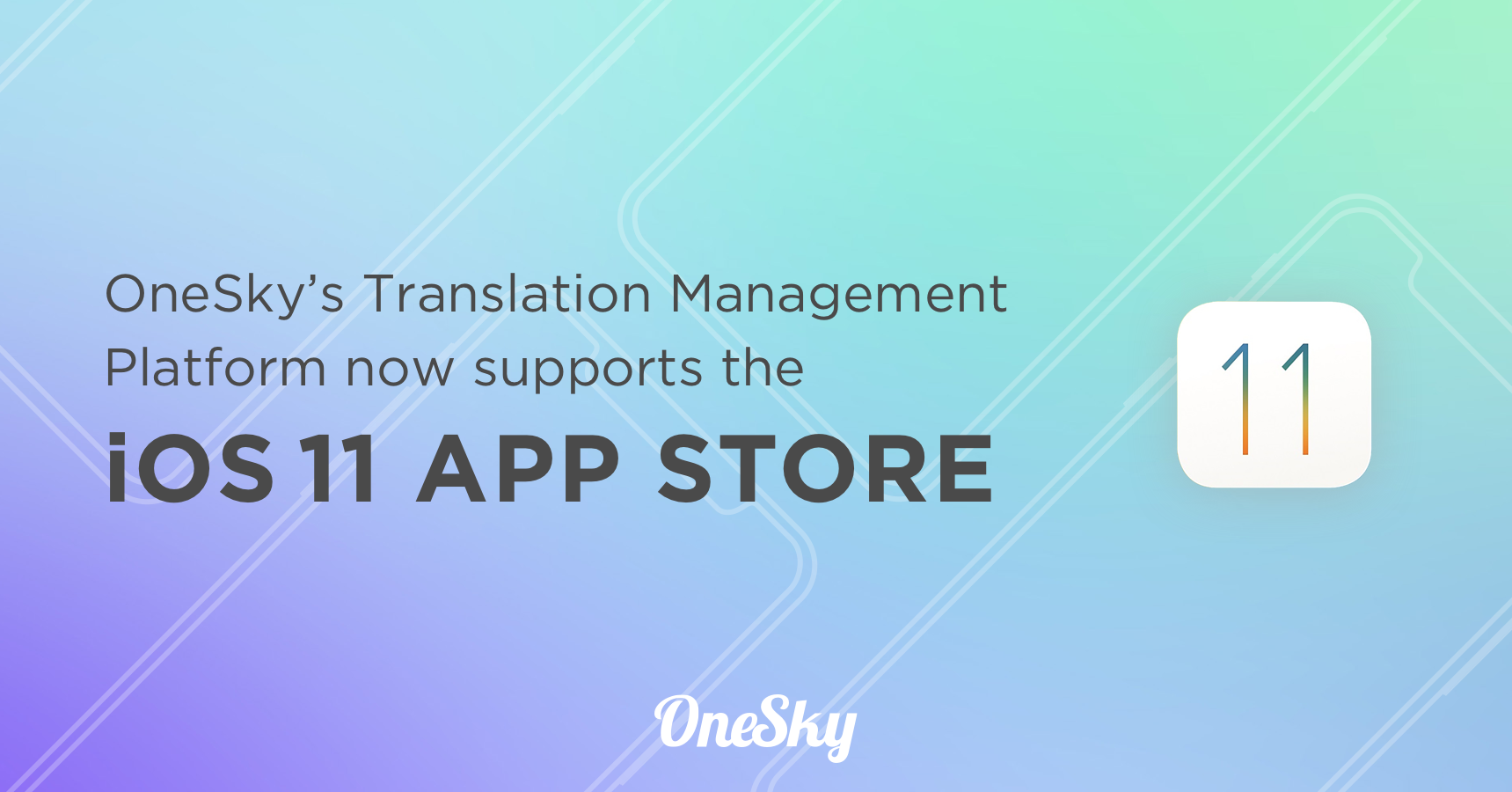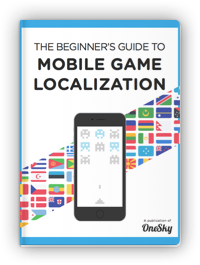Autodesk’s 7 Tips on Improving Localization Collaboration
Imagine this: you’re a software engineer and you’ve been tasked with leading your team through this process called localization to make sure your product can go global.
Challenging, but nothing that you and your team can’t figure out, right?
Here’s the catch: your team also needs to work with the new languages themselves, including collaboration with multiple translation vendors and their engineers to ensure localization happens smoothly.
So now you’ll have to bridge both internal and external teams’ priorities for a smooth hand-off.
The process now seems much more daunting.
This is not an uncommon scenario. Teams new to localizing might assign a developer to the role of localization engineer during their first try at launching their product in a new language, especially if budgets are tight and the ROI of localization hasn’t been measured yet to justify hiring a localization engineer.
An even more likely scenario is working with multiple translation vendors for your content.
According to the translation industry analytics firm Common Sense Advisory, 95% of companies use more than one translation vendor during localization. Among them, 8% have >30 vendors at a time.
This week, we asked Lilian Rossi, Senior Localization Engineer Lead at Autodesk about her tips for localization, the tools Autodesk invests in to optimize their process, and how to improve collaboration with vendors.
Read on for some of our key takeaways from our conversation!
About Lilian Rossi

With more than 10 years of experience in localization engineering, Lilian Rossi has seen her fair share of progress in the industry in the last decade. Having worked in both vendor and client sides, she has experience working in teams of all shapes and functions. Like many in localization, Lilian is a global citizen: she hails from Brazil and is now based in Autodesk’s Singapore office, with many international travels in between.
About Autodesk
Autodesk makes software for people who make things. If you’ve ever driven a high-performance car, admired a towering skyscraper, used a smartphone, or watched a great film, chances are you’ve experienced what millions are doing with Autodesk software.
Here are some of our key takeaways from our conversation with Lilian:
1. Plan your internal to external hand-over process ahead of time
Before diving into the process head first and hoping for the best, Lilian advises sitting down with both internal and external teams to come up with a game plan that both sides agree upon.
If your top priority is saving time and money, make sure your vendor understands that, and can deliver on their promises.
[bctt tweet=”Get deliverables down in writing, ask each other questions, commit to deadlines” username=”oneskyapp”]
Make sure both sides have the tools and support they need to deliver their end of the projects well.
“Think about the best process for the product that you’re going to localize and how you’ll do it,” says Lilian. “You need to decide on a database where you’re going to start translating your workstream. Think about whether you want that to be manual or automatic.”
This is an important decision (which we’ll go into detail in a bit) but as Lilian points out, the scope of how much automation is in your workflows will come down to how many products you want to localize and how much you’re willing to invest in speeding up the internationalization process.
2. Encourage your vendors to learn about how to localize your particular project
Lilian’s advice to vendors is straight-forward: they need to share the burden of learning what will help your particular project succeed. They might have pulled off hundreds of localization projects, but each is unique, with specific needs.
She advises engineers on the vendor side to “learn as much as you can, ask as many questions as you can during the trainings, read the documentation. Be pro-active! This means being responsive to critical issues, be flexible, send complete and correct information when communicating with internal engineers, and be curious.”
Nowadays, automation is king in the localization industry. “If engineers at the vendors’ end are interested in learning a programming language to help update the tools we use,” adds Lilian, “it’s always a plus!”
The best vendors will be able to provide you with the technical support you need. Ideally, you’ll be able to work with a vendor that does. If you don’t, it never hurts to ask or negotiate that into your game plan if you need it. Good vendors are usually quite accommodating in tweaking their setup to deliver the service that is required.
3. Address globalization issues with product development teams
One of Lilian’s major responsibilities is to look at globalization opportunities and discuss them with the product development teams.
With the agile approach to development where sprints and deliveries are planned meticulously, it’s challenging to fix globalization bugs when they come up in localization testing rounds (which happen later in the development sprint timeline.)
To tackle this in an efficient manner, Lilian’s team is building internal tools which can point out the internationalization issues in the code earlier than before in order to “make things easier for developers.”
4. Automate as much of your internal localization workflow as you can
“Before it was all spreadsheets and manual extractions with mini standalone automations,” says Lilian. “Now everything is connected and automated at a larger scale. Our team has heavily shifted focus and now end-to-end automations and sim-ship (simultaneous ship) are key.”
[bctt tweet=”“We are solidly in the Continuous Localization era now”” username=”oneskyapp”]
With the option of continuous delivery via automations, internal engineers are less involved in the day-to-day in repetitive product localization work, leaving the vendors “more time and opportunity to improve processes and create new tools”—tools that will help end-to-end localization on the whole.
Lilian’s own role has transitioned from 100% running localization manually and supporting external teams to only dedicating 5% of that time to collaborating with vendors.
Now, most of her time is on migrating Autodesk’s products and teams to “CL”—their internal name for Continuous Localization—optimizing that process, and building several new internal tools for localization.
“The CL implementation requires good amount of collaboration from internal developers and external vendors,” says Lilian. “We introduce CL to developers and explain how to integrate and use it on their side. Vendors also play an important role in having the required setup in place to proceed with triggering the necessary scripts to begin the localization process.”

Vendor support in the age of continuous delivery means not only checking the deliverables but setting up tools and processes that make your collaboration smoother, explains Lilian Rossi. (Image: Pexels)
5. Invest in your internal team’s skills and tools for continuous delivery
While this might be harder for companies on tighter budgets, Lilian does “recommend everybody to invest in automation” in some way.
This doesn’t necessarily mean money—it could mean having the opportunity to localize more products.
Of course, as Lilian explains, programming is naturally part of the equation. Automation requires good programming skills, which in turn helps you localize more products at a faster rate.
Another option could be creating some kind of workflow that will let engineers know whether a product is ready for localization. (Autodesk has an internal tool built for this purpose.)
This could also mean providing external vendors with the tools and support to help them automate their process as well, as Lilian’s team does. (Translation management systems are especially useful for this function.)
6. Choose vendors that have the kind of specialized support that you need
“Now, translation vendors know everything about the localization process,” Lilian points out. “They’re more proactive and independent now.”
Take extra time in your vendor selection process to find out if they can give you the support you’re looking for, especially if it’s technical or engineering support. This is important if you’re considering continuous localization and automations and are looking for specific integrations with your own tools.
Another key qualifier for a good vendor is making sure that “they are interested in investing in learning opportunities,” says Lilian.
Take Autodesk for example: their engineers train vendor engineers in “everything related to the localization process that is developed by us.” In return, the vendors also take the initiative to migrate to continuous delivery and work with the client’s tools. Agreeing to be on the same page and getting there by learning together is one major factor behind a successful collaboration.
7. Keep up with the localization industry to succeed in the long run
A significant portion of localization education—and Lilian’s role—is staying on top of the latest technology and developments in the localization industry to make better informed decisions about best practices and get her team on board. From a vendor’s perspective, finding out what tools to develop in order to integrate your process or what would be the most helpful for your vendors will contribute to helping your clients in the long run.
[bctt tweet=”“Our goal is to run Continuous Localization well,” says Lilian.” username=”oneskyapp”]
“We want to keep finding innovative ways to localize our products well using tools to find and fix internationalization issues in the source code continuously.”
This responsibility is also one of Lilian’s major challenges: “To achieve this, we need product teams’ acceptance on CL workflows and be able to help them find internationalization issues in the source code as efficiently as possible.”
Here are Lilian’s 7 tips in full:
- Plan your internal to external hand-over process ahead of time
- Encourage your vendors to learn about how to localize your particular project
- Address globalization issues with product development teams
- Automate as much of your internal localization workflow as you can
- Invest in your internal team’s skills and tools for continuous delivery
- Choose vendors that have the kind of specialized support that you need
- Keep up with the localization industry to succeed in the long run
Your Turn
Interested in bringing in your first translation vendors to bring your product global—but not sure what you need? Download our free Beginner’s Guide to Minimum Viable Localization (MVL) to get started: 



 Written by -
Written by - 




 Written by
Written by 


